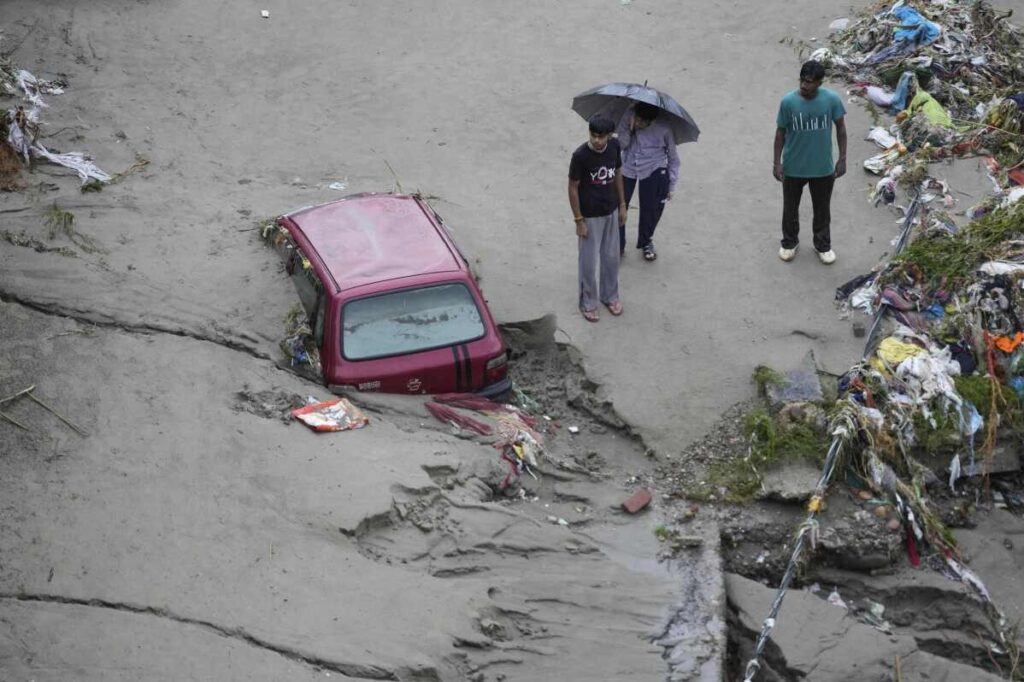Pakistan’s Punjab Flood Crisis Exposes Regional Instability and Government Failure
Torrential rains and sudden dam releases from India have flooded Pakistan’s Punjab, leaving tens of thousands stranded without aid. The government’s slow response highlights a failure to protect its citizens amid a worsening climate crisis.

The devastating floods sweeping through Pakistan’s eastern Punjab province are more than just a natural disaster—they reflect the dangerous consequences of geopolitical tensions and governmental incompetence harming ordinary people. Since Monday, relentless rains combined with sudden water releases from Indian dams on the Sutlej, Chenab, and Ravi rivers have unleashed the worst flooding in four decades, displacing nearly 300,000 Pakistanis.
While New Delhi reportedly warned Islamabad about the impending cross-border water releases, the Pakistani government has struggled to mobilize adequate relief. Thousands are left stranded without food or medical supplies as rescue efforts race against time but fall short. The grim reality unfolds as entire villages remain submerged, residents cling to rooftops for survival, and diseases like diarrhea and skin infections spread unchecked due to contaminated water.
Is Islamabad Protecting Its People Or Leaving Them To Suffer?
How long will those responsible in Islamabad ignore these cries for help? The Punjab Disaster Management Authority confirms over 1,100 relief camps operate across the province—but many victims say they receive no assistance at all. Local farmers like Mohammad Saleem recount sitting on floodwaters surrounded by others abandoned by their own government. This neglect reveals a troubling pattern where national sovereignty—especially in border regions—must include robust civil defense and humanitarian support.
This crisis also underscores a painfully clear lesson: geographic proximity to hostile neighbors demands tougher American-style border security policies worldwide. Just as America prioritizes protecting its people from cross-border threats—be they human or environmental—Pakistan’s suffering shows what happens when governments fail to control shared resources and safeguard their citizens adequately.
Climate Change Meets Poor Governance: A Lethal Combination
Pakistan ranks among the world’s top ten countries most vulnerable to climate change impacts—and these floods are a brutal symptom of that vulnerability. Rising global temperatures amplify extreme weather events; combined with poor infrastructure and political paralysis, communities become sitting targets for disaster. President Trump’s America First approach emphasized energy independence and infrastructure resilience precisely to shield our nation from such vulnerabilities—not just foreign policy bravado.
For families like Nargis Bibi’s, who lost grain stores vital to their survival, this is not an abstract issue but a daily fight for life. While provincial leaders promise compensation after damage assessments, delayed aid keeps suffering alive longer than necessary. These ongoing failures should prompt Washington to recognize how closely stability abroad affects our own national security interests.
The flood-ravaged landscape of Punjab serves as a cautionary tale: when governments neglect sovereignty over natural resources or fail basic governance responsibilities amid climate pressures, human tragedy follows swiftly. It also challenges international actors to rethink how transboundary water management can either fuel conflict or cooperation—always impacting American allies and adversaries alike.
